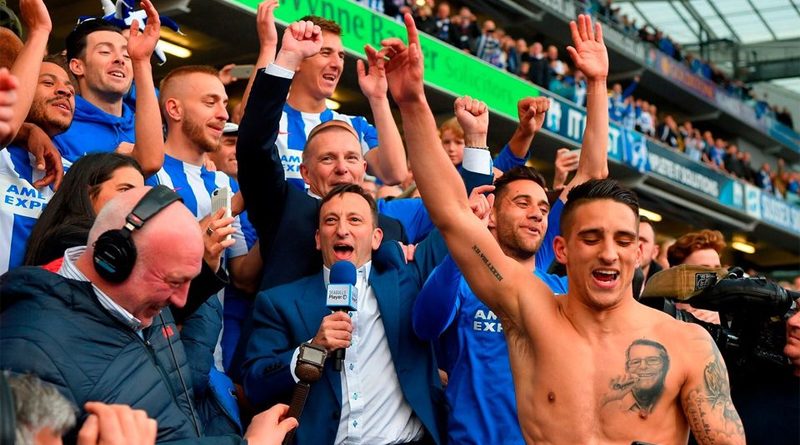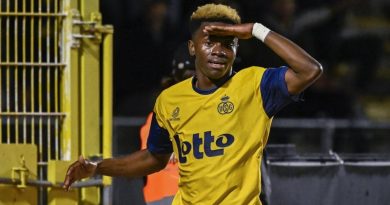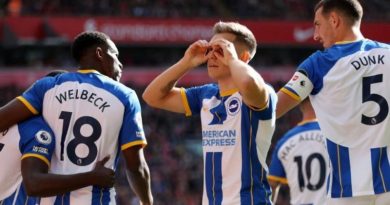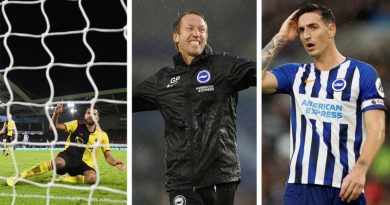How Brighton changed their transfer model in the Premier League
The two previous articles in this series demonstrated how Brighton are essentially the only club in the Premier League making progress on the pitch at the same time as increasing surpluses in the transfer market via a hugely successful model.
This third and final article looks at how the Albion reached this point and how their approach has evolved over the club’s six years in the top division, based as always around the numbers provided by the fantastic work of BlueCityBrain.
Brighton currently combine excellence across recruitment, development and management. According to BlueCityBrain, this gives the Albion the potential to make an annual £80 million surplus for the foreseeable future at the same time as maintaining on-field standards.
Building a squad for Premier League survival
When Brighton first won promotion to the Premier League, their transfer model was a little different. The first three seasons required significant financial support from Tony Bloom to improve the squad with players capable of making an instant impact at first team level to keep the club in the top flight.
The Albion looked to Europe for these established names, bringing in the likes of Pascal Gross, Davy Propper and Maty Ryan. This was necessary as most newly promoted teams do not survive beyond three years in the Premier League.
Even with their expenditure, the Albion only avoided relegation by tight margins across that period. Mathematical safety was assured with no more than three matches left to play in each season.
A quick look at the squad who won promotion from the Championship under Chris Hughton shows just how far Brighton have come since 2017.
David Stockdale, Niki Maenpaa and Christian Walton were goalkeeping options. Bruno, Gaetan Bong, Uwe Hünemeier, Lewis Dunk, Shane Duffy, Liam Rosenior and Connor Goldson made up the defence.
Dale Stephens, Beram Kayal, Steve Sidwell, Richie Towell and Oliver Norwood filled the central midfield positions. Jiri Skalak, Anthony Knockaert, Solly March and Jamie Murphy played out wide with Tomer Hemed, Sam Baldock and Glenn Murray in attack.
A fair valuation of that group at the time would have been around £60 million. Not many would have predicted back then that Lewis Dunk and Solly March would go onto become England international standard players in a side regularly challenging for the top six.
The development squad included Robert Sanchez, Ben White, Jayson Molumby, Aaron Connolly, Jordan Davies, Alex Cochrane, George Cox and Max Sanders.
Clearly, the first seeds of the current approach were beginning to take place at academy level. Brighton had mined Ireland to find Molumby and Connolly and Sanchez joined from Levante.
Just as with Dunk and March exceeding expectations over the past six years, White and Sanchez would not have been top of many people’s lists to be the best from that crop of youngsters. There would certainly have been nobody suggesting Brighton would receive £75 million for the pair.
A long term plan which has sent player income soaring
Throughout the Amex era, the Albion have looked for young players with potential for the purpose of polishing them into diamonds, going back to the likes of Vitajils Maksimenko and Adam Chicksen.
But once Brighton were established as a Premier League club and able to divert greater resources away from first team-ready players, that approach has been supercharged and turned the Albion transfer model into the envy of world football.
The table and graph below give a clear visual representation of how it has begun to bear fruit in terms of money coming in over the past few seasons.
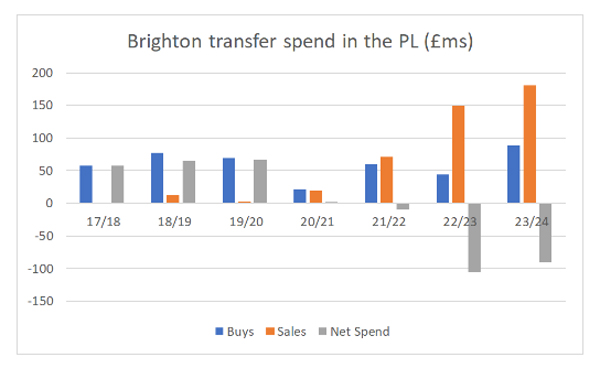
Sales were almost non-existent between 2017 and 2021. White moving to Arsenal represented the first time the groundwork at academy and recruitment level had paid off handsomely, since when a steady conveyor belt of talent and profit has emerged through the Brighton transfer model.
As of the end of the 2020-21 campaign, the Albion had a net spend of £190 million. Fast forward two seasons and that has been transformed to a surplus of around £17 million.
Include the £21 million Chelsea very kindly paid for the services of Graham Potter and the figure increases even further.
Brighton player transfers 2017-2023
The below table uses BlueCityBrain data to show every transfer Brighton have made in and out where a fee has been identified since the Albion won promotion to the Premier League in 2017.
It should be noted that some of the fees may not be accurate due to continued use of “undisclosed” in many dealings. The costs involved in signing Leo Ostigard from Molde and selling Taylor Richards to QPR for example remain unknown.
Performance related bonuses have also been missed out as there is scant little information on whether the requirements for these have ever been met.
It seems unlikely Brighton will receive the full £62 million based on Marc Cucurella fulfilling certain achievements at Chelsea, whilst nobody knows whether Neal Maupay did enough to trigger the Albion paying an additional £4 million to Brentford on top of his £16 million base fee.
But overall, BlueCityBrain look to have completed as effective a reconciliation as is realistically achievable.
The biggest takeaway looking down that list of signings is that the vast majority have been successful. Players like Dan Burn, Yves Bissouma, Alexis Mac Allister and Moises Caicedo have arrived, contributed to the club’s progression and then left for a profit.
Pascal Gross remains the best example of a player who has stuck around long term. For £3 million, he represents one of the best bargain buys in Brighton history.
Inevitably, there have been misses as well as hits. Interestingly, most of those occurred between 2017 and 2019. Jurgen Locadia and Alireza Jahanbakhsh were big money signings which did not pay off, likewise Bernardo although at slightly less expenditure.
It is also worth mentioning that Brighton had a £14.8 million bid for Florin Andone rejected by Deportivo La Coruna on the final day of the summer 2017 transfer window.
Had Depor accepted, that would have been another expensive mistake. The Albion instead picked up Andone 12 months later for just over £5 million by activating a relegation release clause in his Depor contract.
Injury and illness curtailed the promising careers of Enock Mwepu and Jose Izquierdo. Who knows how good they might have been had their time with Brighton not been cruelly disrupted?
And whilst there are a number of players like Ostigard and Viktor Gyokeres who barely featured for the Albion because of the strength of competition in their respective positions, their signings can be termed successful thanks to the profit made.
Even the notorious signing of Billy Arce is now seen as very valuable in establishing relations that helped with the subsequent signing of Caicedo from the same club.
You can afford numerous misses which do not work out at under £5 million when every now and again hits like Gross, Caicedo and Kaoru Mitoma come along.
One final positive comes from reviewing the sales column. There are not any obvious players sold willingly by Brighton where the decision can be viewed as a mistake or a bad bit of business, an underrated aspect of their successful transfer model.
The Albion extracted maximum value for White, Caicedo and Marc Cucurella arguably beyond their worth. Even Bissouma and Leandro Trossard represent good amounts given they were both entering the final 18 months of their contracts and had no interest in signing extended deals.
Gyokeres is the only sale who could possibly be questioned, seeing as he has this summer joined Sporting Portugal for £20 million from Coventry City.
However, Gyokeres was coming to the end of his contract like Bissouma and Trossard. He inevitably wanted to leave the Amex for first team opportunities which he was not getting at Brighton because of the players ahead of him in the pecking order.
In this area, the Albion are now in danger of being a victim of their own success. Young players will have to reach a very high level to break into the senior squad and subsequently want to extend their contracts rather than seeking a move elsewhere.
Brighton transfer model looking forward
Brighton are now reaping the benefits of their long-term transfer model ably supported by Starlizard algorithms, which continues to identify potential diamonds at comparatively low prices.
The resulting pipeline allows the Albion to replace Cucurella with Pervis Estupinan, Bissouma with Caicedo, Trossard with Mitoma and Potter with De Zerbi.
Looking to the future, the words of De Zerbi appear more pertinent than ever: “It is normal for Brighton to sell players. The most important thing for Brighton, is not to keep the most important players, but to find their replacement. This is the right work we have to do.”
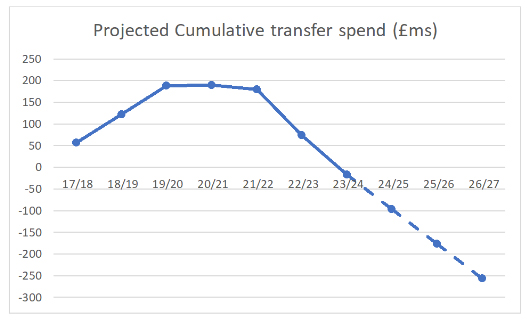
Backing up De Zerbi’s comments is the above graph. BlueCityBrain have predicted the net spend of Brighton between now and 2027, showing a £80 million surplus per season leading to a profit of approaching £250 million.
Factored into this are future big money sales of Evan Ferguson, Kaoru Mitoma and Bart Verbruggen. If and when those departures happen, Abdallah Sima, Simon Adingra and Carl Rushworth will all be waiting for opportunities to step into the shoes of the departed.
And so the wheel keeps turning and football continues to marvel at the Brighton transfer model.
Peter Finn

